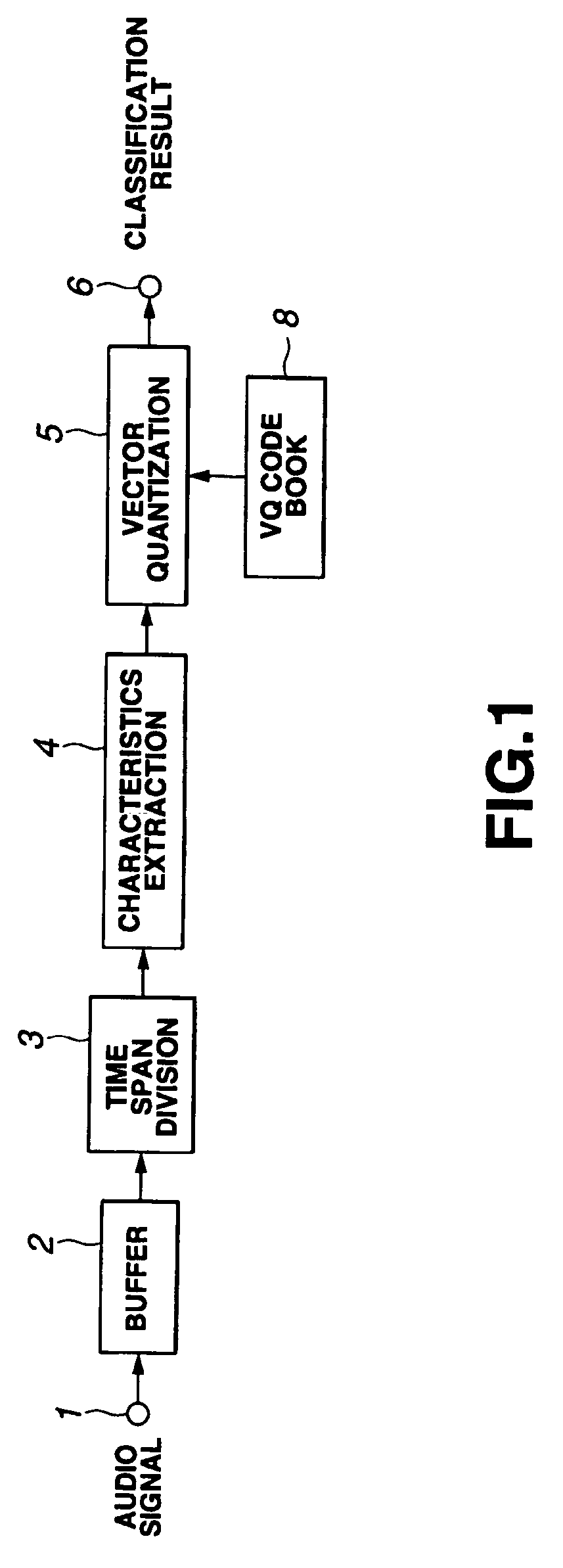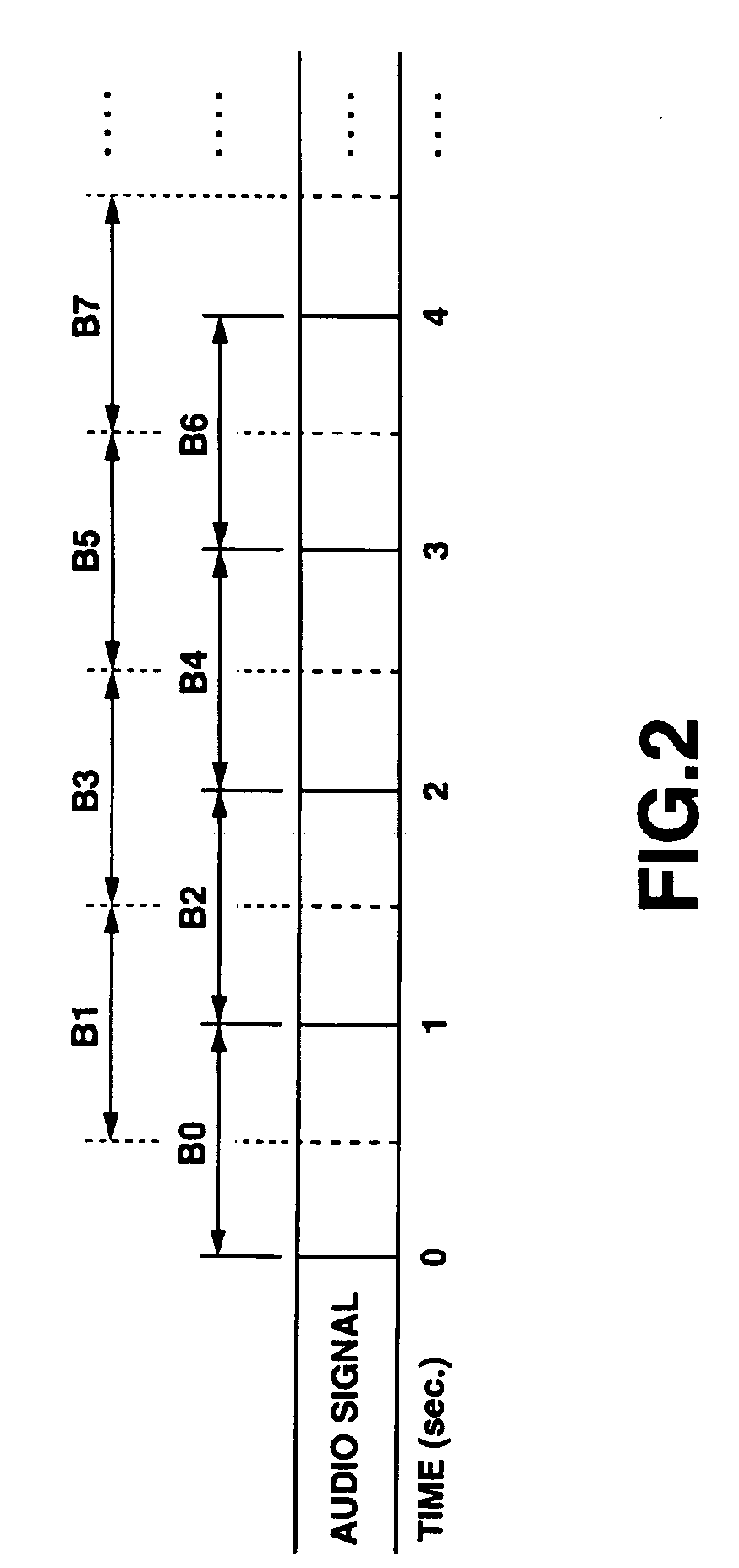Method and apparatus for classifying signals, method and apparatus for generating descriptors and method and apparatus for retrieving signals
a signal and classifier technology, applied in the field of signal classifiers, can solve the problems of inability to reliably apply to music signals that contain signals, inability to accurately and reliably discriminate between voice signals and acoustic signals, and inability to correctly classify input signals, etc., to achieve efficient and accurate classification of pieces, the effect of processing quickly and accurately
- Summary
- Abstract
- Description
- Claims
- Application Information
AI Technical Summary
Benefits of technology
Problems solved by technology
Method used
Image
Examples
first embodiment
[0054]FIG. 1 is a schematic block diagram of the present invention, which is a signal processing an apparatus adapted to classify input signals (e.g., audio signals), schematically illustrating its configuration.
[0055] Referring to FIG. 1, an audio signal is input to input terminal 1 and temporarily stored in buffer memory 2. Subsequently, it is read out and sent to time block splitting section 3.
[0056] The time block splitting section 3 divides the audio signal fed from the buffer memory 2 into blocks having a predetermined time length (time block division) and sends the obtained blocks of audio signal to feature extracting section 4. The blocking operation of the time block splitting section 3 will be described in greater detail hereinafter.
[0057] The feature extracting section 4 extracts a plurality of characteristic quantities from each block of audio signal and send them to vector quantizing section 5. The processing operation of the feature extracting section 4 for extractin...
second embodiment
[0125] Now, the present invention will be described below.
[0126] When, for example, retrieving a necessary part of the stream of an accumulated long audio signal, generally, the user may listen to the stream of sound while replaying it in the fast replay mode and starts replaying it in the normal replay mode when he or she locates the start of the wanted part. However, with this retrieving technique, it will take a long time before the user can locate the wanted part of the audio signal and the user is forced to endure the tedious operation of listening to the queer sound produced as a result of the fast replay.
[0127] With the second embodiment of the present invention, the result of classification of sound change structure (particularly, the sound source change structure and the multiple sound source change structure) as described above by referring to the first embodiment is used to detect the point(s) of switch of the audio signal (to be referred to as scene change(s) hereinafte...
PUM
 Login to View More
Login to View More Abstract
Description
Claims
Application Information
 Login to View More
Login to View More - R&D
- Intellectual Property
- Life Sciences
- Materials
- Tech Scout
- Unparalleled Data Quality
- Higher Quality Content
- 60% Fewer Hallucinations
Browse by: Latest US Patents, China's latest patents, Technical Efficacy Thesaurus, Application Domain, Technology Topic, Popular Technical Reports.
© 2025 PatSnap. All rights reserved.Legal|Privacy policy|Modern Slavery Act Transparency Statement|Sitemap|About US| Contact US: help@patsnap.com



